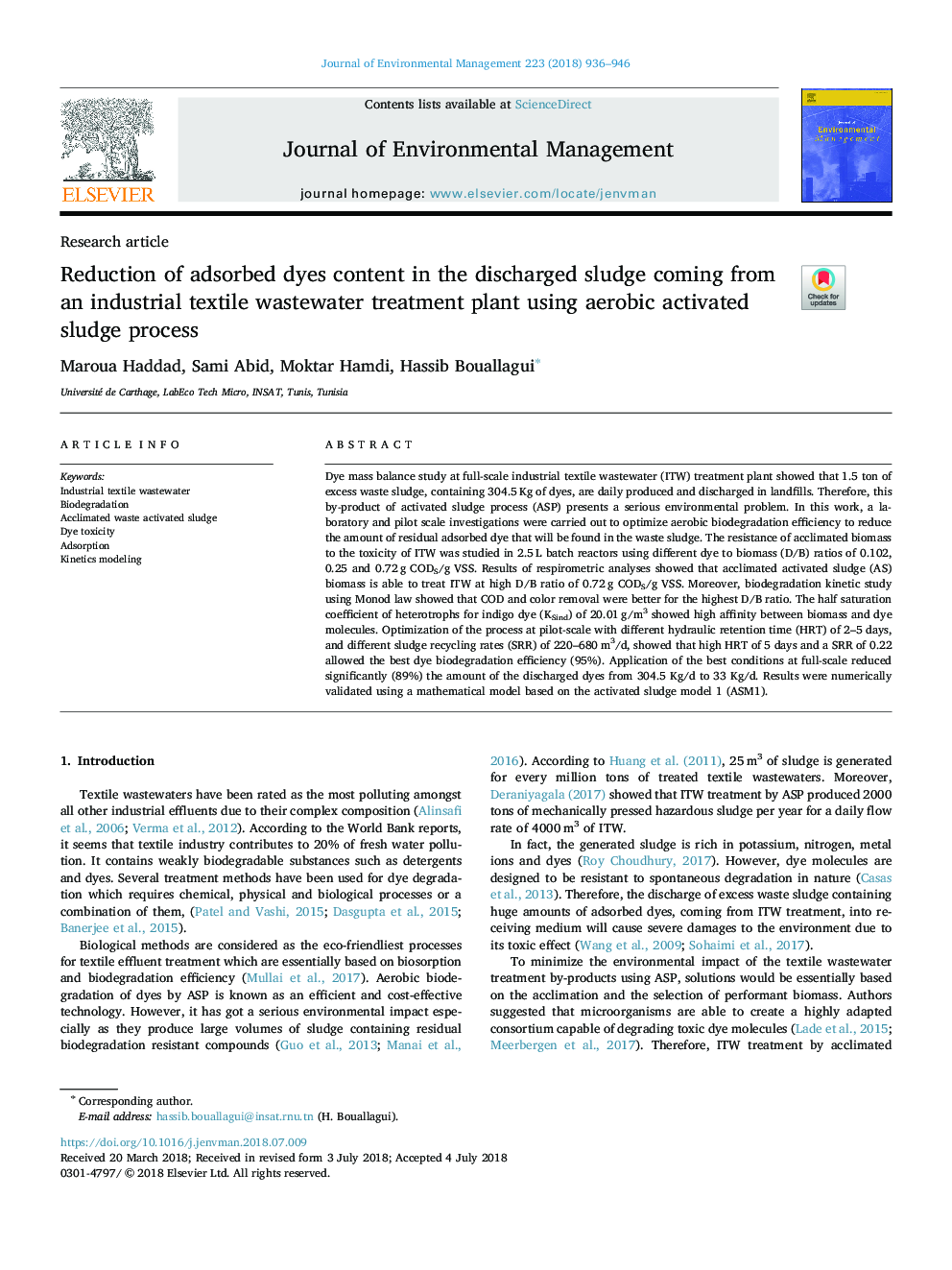| کد مقاله | کد نشریه | سال انتشار | مقاله انگلیسی | نسخه تمام متن |
|---|---|---|---|---|
| 7476298 | 1485195 | 2018 | 11 صفحه PDF | دانلود رایگان |
عنوان انگلیسی مقاله ISI
Reduction of adsorbed dyes content in the discharged sludge coming from an industrial textile wastewater treatment plant using aerobic activated sludge process
ترجمه فارسی عنوان
کاهش میزان رنگدانه های جذب شده در لجن تخلیه شده از یک تصفیه خانه فاضلاب صنعتی با استفاده از روش لجن فعال هوازی
دانلود مقاله + سفارش ترجمه
دانلود مقاله ISI انگلیسی
رایگان برای ایرانیان
کلمات کلیدی
فاضلاب نساجی صنعتی، تجزیه زیستی، لجن فعال زباله تکمیلی، سمیت رنگ جذب، مدل سازی سینتیک،
موضوعات مرتبط
مهندسی و علوم پایه
مهندسی انرژی
انرژی های تجدید پذیر، توسعه پایدار و محیط زیست
چکیده انگلیسی
Dye mass balance study at full-scale industrial textile wastewater (ITW) treatment plant showed that 1.5 ton of excess waste sludge, containing 304.5â¯Kg of dyes, are daily produced and discharged in landfills. Therefore, this by-product of activated sludge process (ASP) presents a serious environmental problem. In this work, a laboratory and pilot scale investigations were carried out to optimize aerobic biodegradation efficiency to reduce the amount of residual adsorbed dye that will be found in the waste sludge. The resistance of acclimated biomass to the toxicity of ITW was studied in 2.5â¯L batch reactors using different dye to biomass (D/B) ratios of 0.102, 0.25 and 0.72â¯g CODS/g VSS. Results of respirometric analyses showed that acclimated activated sludge (AS) biomass is able to treat ITW at high D/B ratio of 0.72â¯g CODS/g VSS. Moreover, biodegradation kinetic study using Monod law showed that COD and color removal were better for the highest D/B ratio. The half saturation coefficient of heterotrophs for indigo dye (KSind) of 20.01â¯g/m3 showed high affinity between biomass and dye molecules. Optimization of the process at pilot-scale with different hydraulic retention time (HRT) of 2-5 days, and different sludge recycling rates (SRR) of 220-680â¯m3/d, showed that high HRT of 5 days and a SRR of 0.22 allowed the best dye biodegradation efficiency (95%). Application of the best conditions at full-scale reduced significantly (89%) the amount of the discharged dyes from 304.5 Kg/d to 33 Kg/d. Results were numerically validated using a mathematical model based on the activated sludge model 1 (ASM1).
ناشر
Database: Elsevier - ScienceDirect (ساینس دایرکت)
Journal: Journal of Environmental Management - Volume 223, 1 October 2018, Pages 936-946
Journal: Journal of Environmental Management - Volume 223, 1 October 2018, Pages 936-946
نویسندگان
Maroua Haddad, Sami Abid, Moktar Hamdi, Hassib Bouallagui,
